Published Apr 9, 2025
In Seven of Nine, I Saw My Own Immigration Story
As Seven of Nine used technology to reconnect with her human side, one fan started doing the same to rediscover her family.
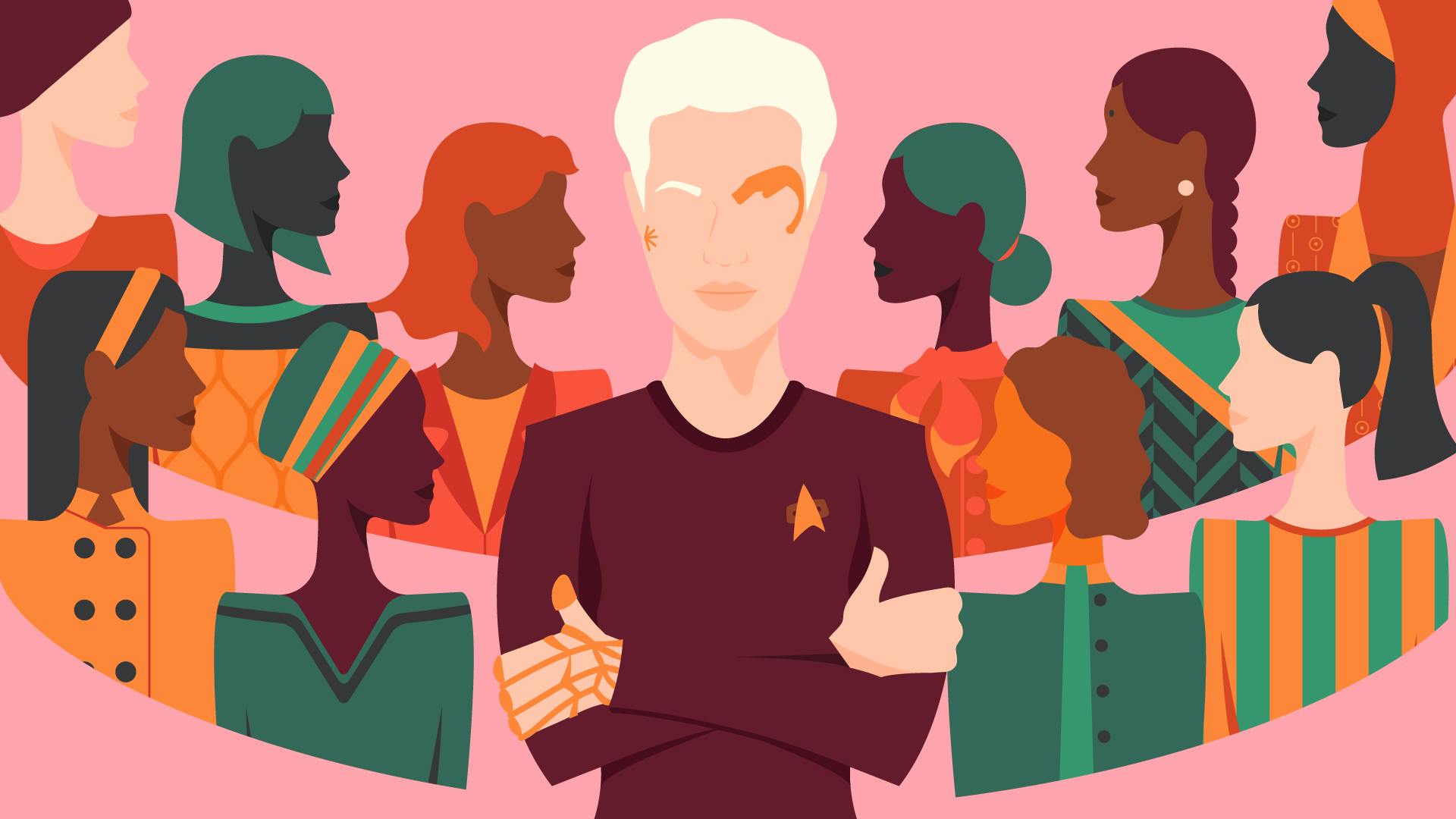
StarTrek.com
Nowadays it's common to visit popular websites and see list articles that discuss '80s and '90s nostalgia. These lists are often not written by writers of color, and they show pictures of toys, gadgets, magazines, and video games.
When I see these, I realize that upper middle class and white children had very different experiences than I did growing up. These lists most often remind me of things my parents couldn't afford. I grew up in a neighborhood of working-class immigrants, and few of us had the privilege of buying a Game Boy, Nintendo 64, or any other trendy toy. At least not without some extremely hard work on our parents' side.
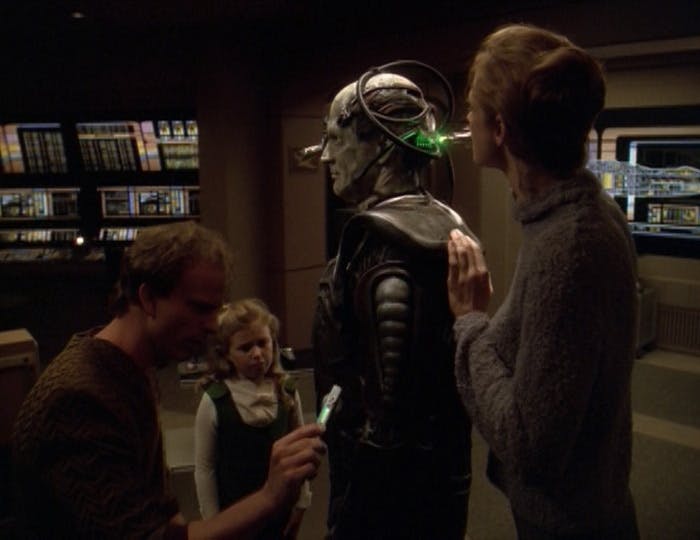
"Dark Frontier"
StarTrek.com
The pictures that get me emotional are the ones of old computers and chat programs. Like other teens, I also used sites such as AIM and MSN Messenger to chat with friends after school.
My mother and I came to the United States from El Salvador in 1989. At 3 years old, I didn't understand that my mother was working hard to make sure we could stay in the United States and adjust our immigration status. When we moved to the United States, we arrived to a country that gave us access to a better life, but it also meant we'd live in a more materialistic society. Her dream was that we would earn our green cards, and be able to go back and visit family.
That's not what happened though. My mother remarried, and she and my stepdad had my three siblings. We weren't able to visit El Salvador for the first time until 2003. School, learning English, PBS, and roller blades soon replaced any memory I may have had of the country of my birth. It might as well have been a planet from a different galaxy.
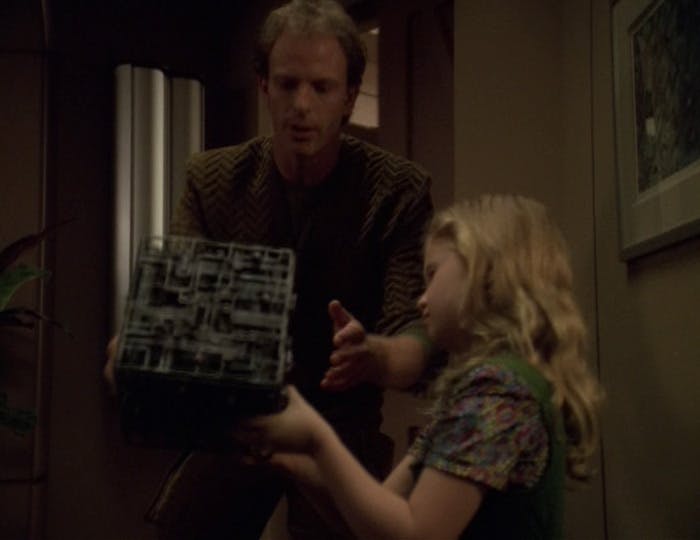
"Dark Frontier"
StarTrek.com
Nostalgia lists often include references to shows I couldn't watch because I didn't have cable, but I remember channel-surfing and catching a few glimpses of when I was a kid. At the age of 5, it was hard to understand what the show is truly about, but I remember Geordi because I knew LeVar Burton from Reading Rainbow.
My favorite thing — and the only thing I understood about Star Trek — was watching the characters beam from one planet to another. At this age, I'd only have the show on as background noise to whatever I was reading. I noticed that they looked different and generally got along.

"Encounter at Farpoint"
StarTrek.com
Klingons, Humans, Androids, Betazoids and so many others seemed to enjoy their space explorations and solve problems in nerdy, yet peaceful, ways. In Star Trek, technology seemed to solve problems and erase borders.
My mother studied accounting in El Salvador and she needed only a year and a half to graduate from college before we came to the U.S. She always intended for me to go to college. Around the time when I was to begin the 9th grade, she and my stepdad decided to get me a computer so I could do my homework. For them, this was an investment in my education. They'd seen how often I'd have to stay at the school library after school, and that it was hard for me to get my work done there sometimes because of the time limits. But the unexpected benefit of placing this new technology in our home was the way it brought our family closer together. I quickly learned that one of my uncles was a graphic designer who had access to the internet at work. We exchanged emails, and suddenly some of my relatives became my online buddies.
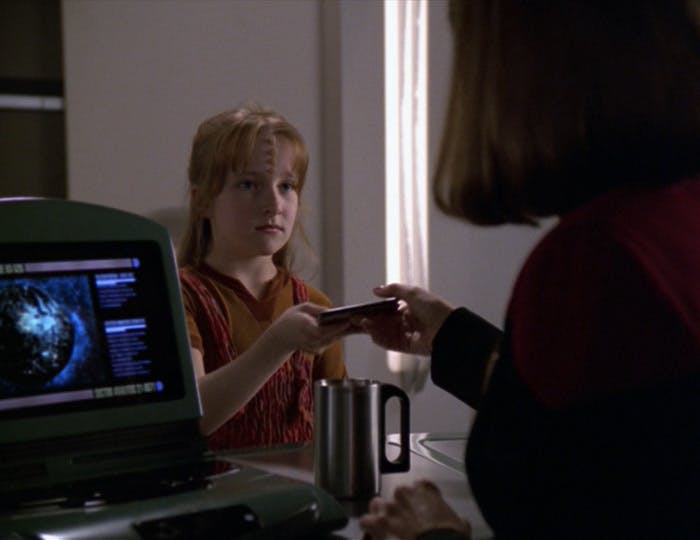
"Dark Frontier"
StarTrek.com
At the time, AIM chat rooms were popular, and I had a few online friends. There was a time when talking to my uncle online was much like talking to these chat room buddies. I knew almost nothing about him except the stories my mother told me about their childhood growing up, but the difference is that years had gone by since they'd seen each other in person.
Sometimes my mom would use my MSN Messenger account and they'd be able to chat too. For some time, this was how we'd wish each other a happy holiday, discuss news, or ask questions. My uncle would type out jokes, or tell me about my young cousins. Other cousins would frequent cyber cafés, and sometimes we were lucky enough to catch each other.
Internet chat programs became a communication lifeline for my family. Non-immigrant children who only used these programs to stalk their crush and have fun will never be able to understand what it was like to depend on the internet to contact even one of my relatives.
In 2003, when my family and I saw each other, I felt like meeting my uncle was kind of like meeting a chatroom friend.
When one of my college roommates cleaned out her DVD collection, we were both pleased when she found her collection of . I was now 21 years old and better able to understand Star Trek. As we binge-watched the old-fashioned way (pre-Netflix), I once again saw the characters beam and travel far throughout the galaxy.
The difference was that, this time, I was preparing to do a semester abroad in Mexico City, and once again, worried about passing through and fitting into a new culture. My favorite character on Voyager was always Seven of Nine. A human who was taken by a Borg Cube; she was both human and not, and didn't quite fit in with either.
I obviously still look like a Salvadoran on the outside, and my mother and relatives did what they could to make sure I knew about my culture, but I still went to U.S. schools. I may have come from a collective society, but I'm most familiar with the American tenants of rugged individualism and consumer culture. Thus, when it came to seeing my own experience in Star Trek, my favorite episodes were the ones where Seven struggled between her Borg upbringing — something that occurred through no fault of her own — and her desire to feel human emotion and compassion.
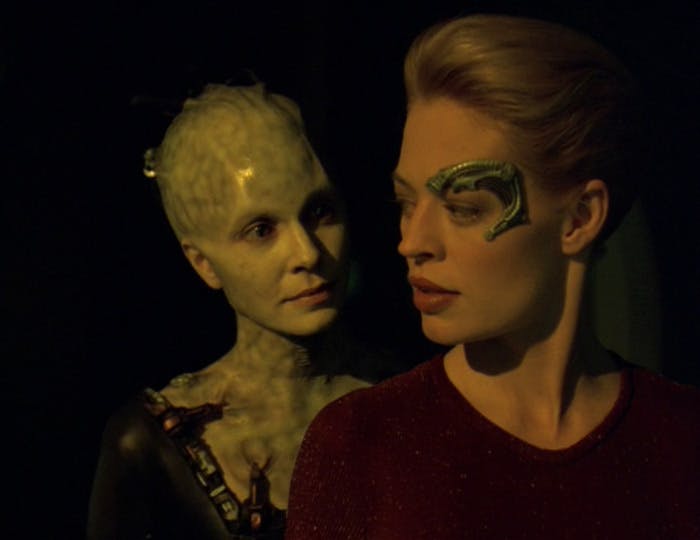
"Dark Frontier"
StarTrek.com
When The Doctor first de-assimilates Seven of Nine, he tries to make jokes with her and even has to tutor her in the ways of humanity. Even though she's no longer a part of the Borg Collective, Seven of Nine uses more robotic language to express herself. She usually answers questions in a way that seems technical — "That is acceptable," "That is affirmative," instead of a simple "yes." It's clear that Seven has a desire to connect with others and express herself, but doesn't have shared human experiences, skills, or the tools she needs to do so. Seven has the body of a human, for the most part, but many of her routines and way of understanding the world around her are still Borg. Seven's Borg implants give her away.
I felt the same after landing in El Salvador for the first time. I looked just like everyone else. I was born in the country, and was technically coming back home. So why did I feel different?
We missed each other, but didn’t know where to start catching up on life. We never actually figured out how.
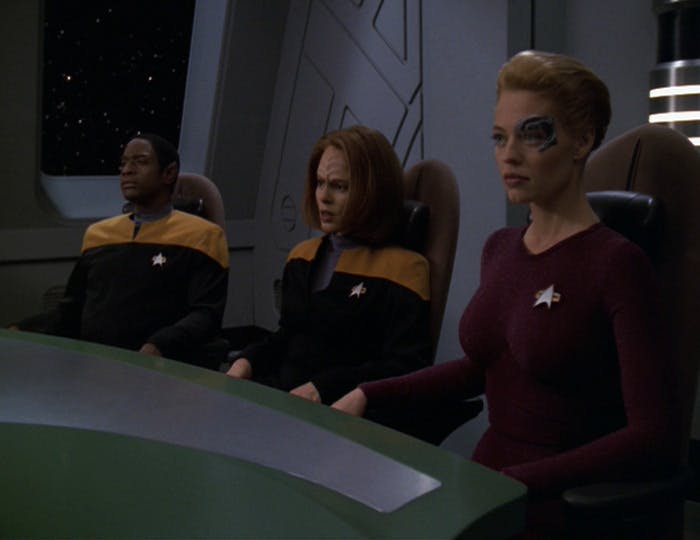
"Dark Frontier"
StarTrek.com
There's a small moment in Voyager when Seven of Nine is learning how to smile. She keeps changing her facial expression back and forth. This small act shows us more of her true human nature, and her ability to be herself. By the time the series ends, she's accepted her humanity and the way life in the Borg Collective has influenced her. I had to have these small moments too in order to fully accept that I'm Salvadoran-American, and there are moments when neither country will accept me at times.
Wherever I go, there are always things that give me away and show that I'm a multicultural person. Unlike Seven, I had access to people in my country thanks to the internet, but I missed out on a lot. I no longer had a Salvadoran accent and couldn't understand local slang. My cousins and relatives had been living in post-war El Salvador while I was in Los Angeles living a relatively peaceful life.
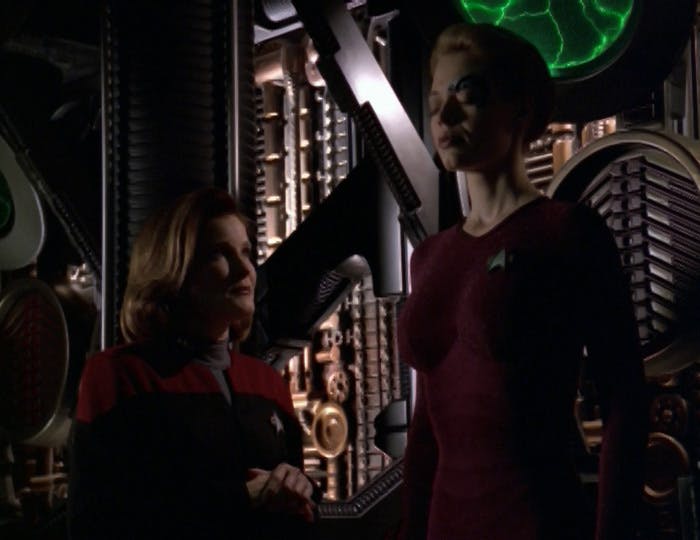
"Dark Frontier"
StarTrek.com
Similarly, Seven of Nine dealt with family trauma; this was captured beautifully in "." First, she has to learn how to eat properly because she's a full human now, and she continues to have strange hallucinations. As her homing device continues to reactivate within her, the Voyager crew helps her get back to the U.S.S. Raven. This is where Seven comes to terms with how she became assimilated into the Borg Collective. She later learns about her family's fate thanks to the help of the technology within her, and her new mentor, Captain Janeway.
As I got older and learned to understand exactly how much trauma I and so many others have faced as a result of the United States' immigration system, I also notice that things haven't changed much at the federal level. Thankfully, technology has.
There are now many programs that help undocumented immigrants and first-generation immigrants such as myself stay connect with our families. We're better able to send money, call each other, and share our lives with them on social media.
Our technical ability to stay in contact will never replace the years we lose while we wait for a better solution to immigration law all over the world, but it offers hope that technology can be used for good. We still can't beam to other planets, but we can use what we have to show others we love and care for them, at least until the next invention rolls along.
Jeri Ryan Answers a Fan's Question





